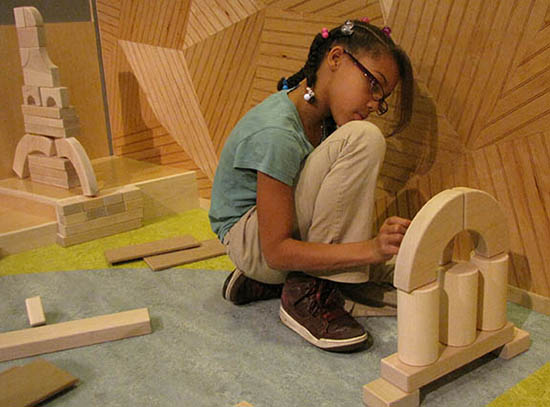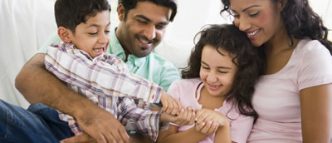By Robin Meisner, Director of Exhibits, Providence Children’s Museum
For more than a decade, Providence Children’s Museum has opened its doors to developmental psychologists who explore how children think, learn and develop. Each week, researchers from The Causality and Mind Lab at Brown University and Kid Think at Providence College conduct controlled studies in the Museum’s Mind Lab to see how kids think about or react to certain games or situations. As scientists, the researchers make observations of many children and try to understand how they learn. They are not testing how “smart” an individual child is — they’re looking at how children (in general) think and what they can do at certain stages of development.

In late 2012, the Museum expanded this work with researchers when we began a major three-year research project in collaboration with The Causality and Mind Lab, funded by a grant from the National Science Foundation (award #1223777). Researchers at Brown are looking at the development of scientific thinking in young children. At the Museum, we’re building on our interests in creating rich play environments and providing support for children, caregivers and Museum educators to notice and value the learning that happens through play. Specifically, we’re exploring how we might best support children’s metacognition — their ability to notice and reflect on their own thinking — and adults’ awareness and appreciation of kids’ thinking and learning through play, at the Museum and beyond.
 Drawing from fields like developmental psychology, informal education and museum visitor studies, the Museum’s exhibits team has looked at studies on the types of learning that naturally occur through play, when children start to become aware of their own thinking, and how the design of museum environments encourages visitors to reflect on their learning. Last summer, we conducted observations in three of our exhibits — Play Power, ThinkSpace and Water Ways — and documented how children ages 3 to 11 interacted with exhibit materials and the people around them. We looked for indicators of children’s learning through play, such as critical thinking and problem solving. Next, we interviewed parents and caregivers about what they notice children doing in the exhibits, asking them to reflect on their children’s thinking.
Drawing from fields like developmental psychology, informal education and museum visitor studies, the Museum’s exhibits team has looked at studies on the types of learning that naturally occur through play, when children start to become aware of their own thinking, and how the design of museum environments encourages visitors to reflect on their learning. Last summer, we conducted observations in three of our exhibits — Play Power, ThinkSpace and Water Ways — and documented how children ages 3 to 11 interacted with exhibit materials and the people around them. We looked for indicators of children’s learning through play, such as critical thinking and problem solving. Next, we interviewed parents and caregivers about what they notice children doing in the exhibits, asking them to reflect on their children’s thinking.
Based on findings from our observations and interviews, we’ve begun to develop and test new tools and activities to make the learning that happens through play visible to adults and children. So don’t be surprised if you’re asked to test out new materials and share your thoughts when visiting the Museum this year — completely voluntary, of course, but we’d love your feedback.
Visit the Museum’s blog for Learning About Learning project updates.









